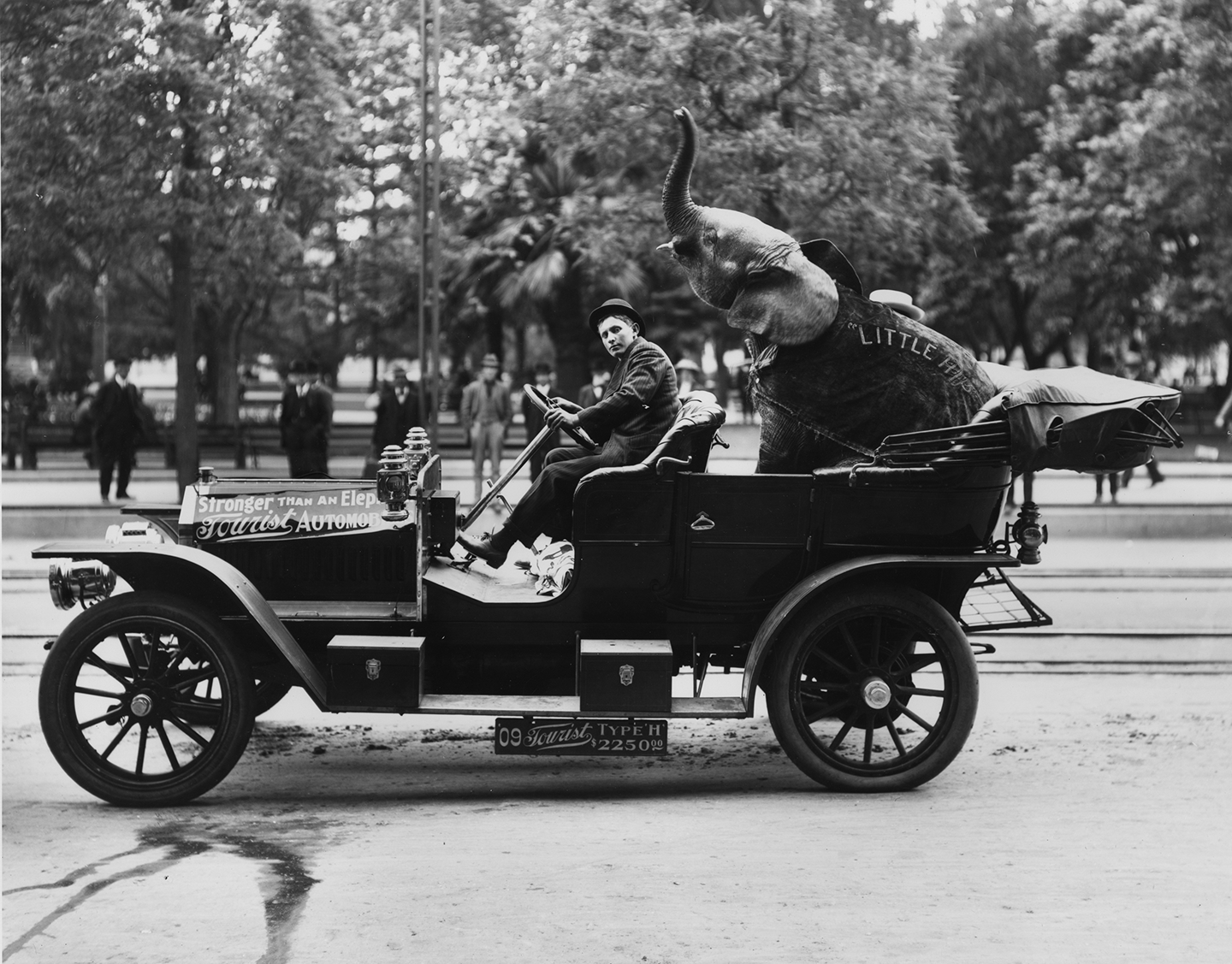LA traffic (and car culture) gets a fresh understanding in ‘Driving Force’

ORANGE COUNTY REGISTER | By Liz Ohanesian
How did Los Angeles become a car-centric metropolis?
In “Driving Force: Automobiles and the New American City, 1900-1930,” out this month from Angel City Press, Darryl Holter and Stephen Gee explore that question, diving deep into the rise of automobiles in Southern California. Jay Leno provides the book’s introduction, writing that he thought he’d known the whole story of the rise of the automobile, “But like everything else in America, the real story is a lot more complicated than that.”
“What we found is that the automobile and the city of L.A. grew up together,” says Holter on a recent Zoom call with Gee.
“By 1920, there are 350,000 cars registered in Los Angeles County,” says Gee, an author of several previous books about Los Angeles. “By 1930, it’s half a million. It’s shocking how that idea of a lifestyle that these dealers were selling was so quickly embraced.”
Los Angeles’s car obsession impacted the city and the auto industry. However, some innovations developed by local car dealers were lost to history – until recently.
Holter is a historian, but in the mid-1990s he got into the car dealership business and helped revitalize Figueroa Corridor, Los Angeles’ historic Auto Row. A former president of the California New Car Dealer’s Association, he was asked by the group to examine some boxes of papers in Sacramento that had been unearthed.
Intrigued, he headed to Sacramento and what Holter discovered in those boxes was surprising. The papers included minutes from meetings of the Motorcar Dealer’s Association from its first sit-down in 1905 through the 1920s, as well as reports from the Los Angeles Auto Show, which began in 1907. A treasure of trove of primary sources, they were ultimately donated to the Seaver Center for Western History Research at the Natural History Museum of Los Angeles County.

Tourist Auto, 1909. (Photo credit: Seaver Center / Courtesy of Angel City Press)
The materials formed the basis of Holter’s early research for “Driving Force.” Some of what Holter learned came as a surprise both to him and the auto dealership world. For example, in the early years of the industry, it was the dealers who provided capital for the car manufacturers.
“The early manufacturers in the first five, ten years of the automobile industry, had no capital. They couldn’t get money from the banks,” he explains. “So, where did they get the money? From the dealers. The dealers took deposits from customers, added their own money, sent it to the manufacturers. The manufacturers used the money from the dealers for the working capital to make the cars. Then they sent the cars to the dealer and the dealer paid off the balance. That was something that no one ever knew.”
Financing plans were developed by car dealers, too. “There were no agencies that were doing credit. There was no retail credit for automobiles. Banks didn’t do them. There wasn’t any GMAC,” says Holter. “You had a period of almost 20 years where dealers are doing the financing, kind of doing it on their own. That’s something that I never really knew.”
The car dealers established service and repair centers as well. “Dealers were the ones that became the important link between the manufacturers, mostly in Detroit and the Midwest, and the customers out here,” says Holter. “The dealers were the ones that made it all happen and they did what they needed to do. They did it on the basis of trial and error. They didn’t really know how to do this. They were figuring it out as they went.”
This booming industry would go on to influence the look of Los Angeles as dealerships grew larger and the city’s Auto Row moved from Main Street to Figueroa.
Gee had some insight into the aesthetics of the industry that he gained while writing “Iconic Vision: John Parkinson, Architect of Los Angeles,” about the architect behind Los Angeles City Hall, Bullock’s Wilshire, Los Angeles Memorial Coliseum and Union Station.
“He was obsessed with cars,” says Gee. “I knew that he was obsessed with designing buildings for these dealers.”
With “Driving Force,” Gee could see the evolution of architecture in the city as the car rose to prominence and dealerships became showpieces designed by top-tier architects.
“There’s so much money that pours into the city that the car sales, particularly in Los Angeles, are so strong and these dealers become so wealthy that they can afford to hire the best architects at that period, the best artists to come and decorate their showroom,” Gee explains, “and you begin to see these competitions almost — if not spoken competitions — between dealers to see who has the latest facilities, who has the most up-to-date architectural styles.”
He adds, “It mirrors the growth of Los Angeles, but because there’s so much money in the car industry at that time, they’re able to afford the most impressive buildings.”
This wealth of information allows Holter and Gee to tell a story that previously hadn’t been told.
“This is the first book that’s really ever talked about how cars were sold, how they were merchandised in a city,” says Holter. “We’re the first one out of the gate on this whole idea of how this group of entrepreneurs was able to convince people that the car is not a luxury, it’s a necessity.”


